The elegant Nyonya kebaya – wearable art that knows no seasons

"When in Rome, do as the Romans do." This oft-quoted adage champions the virtues of adaptation. Whether or not the early Chinese immigrants to Malay Archipelago were familiar with this nugget of wisdom, their actions mirrored its essence. These enterprising settlers, who journeyed to these lands in search of opportunity, not only carved out new lives but also intertwined their heritage with local traditions. Some married Malays and embraced elements of their customs while steadfastly preserving their Chinese beliefs and philosophies. From this union arose the Chinese Peranakan community – also known as Babas and Nyonyas – a vibrant cultural fusion renowned for its distinctive charm and ingenuity.
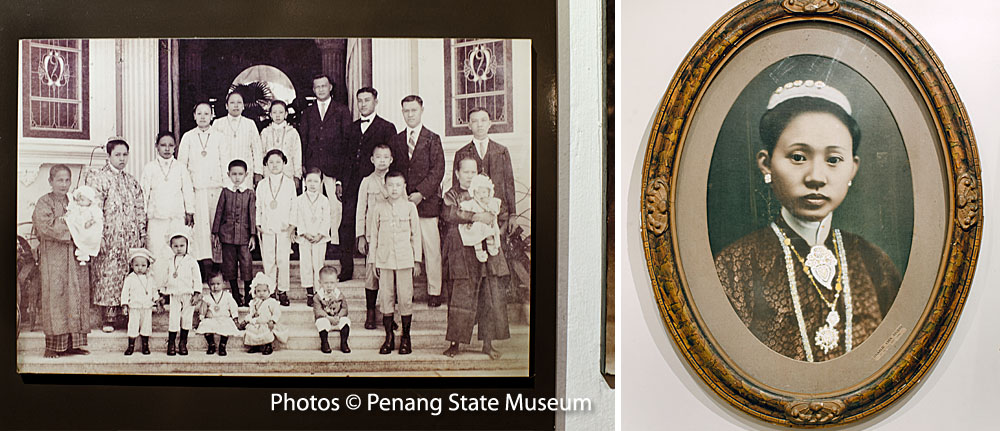
On the surface, little of the Chinese Peranakan heritage seems to show and what remains is often hard to recognise. Yet, the Nyonya influence endures, especially in the culinary realm, with dishes like acar hu (pickled fish), jiu hu char (stir-fried yam bean with shredded cuttlefish) and hong bak (braised pork belly) standing as delicious testaments to their legacy. Their iconic attire and accessories – the kebaya, kerongsang, beaded slippers and ornamental belts – are now rare luxuries, reserved for special occasions and donned by a fortunate few. Today, most of the Chinese Peranakan in Penang have seamlessly blended into modern life, particularly the younger generation. They no longer stand out as they once did and the only way to truly identify one is simply to ask!
The Nyonya thread in my family likely traces back to my maternal grandmother, Emily Elizabeth Surin – a name almost certainly bestowed upon her by the Mother Superior of Light Street Convent. It was within the convent’s walls that she was raised among other orphans, her heritage and even the identity of her parents shrouded in mystery.

The left photograph above, taken in 1925, captures the wedding of my maternal grandparents, Louis Michael Martin and Emily Surin (seated). Standing to the far left in a white hat is Marianne, Grandpa’s 17-year-old niece. Beside her is her husband, Edward and next to him, his parents, Frederick and Adelaide Boudville. The photograph on the right is a cherished snapshot of Granny and me.
Granny, as far back as I can remember, embodied the essence of Peranakan heritage. She spoke fluent Malay, wore her hair in a neat bun and dressed daily the traditional baju kedah – a round-neck floral blouse paired with a vibrant batik sarong. The buttons on her blouses were often fashioned from five-cent coins bearing Queen Victoria’s portrait, a detail as unique as it was charming. She also had a particular fondness for the bold flavours of sambal belacan.
In 1941, just before the outbreak of World War II, Grandpa tragically passed away. Despite her petite stature, Granny exemplified the resourcefulness characteristic of many Nyonyas. Through the horrific years of the Japanese Occupation, she ensured that her eight children – including two adopted sons – were never left hungry. It was from Granny that Mum inherited her enduring Peranakan traits.

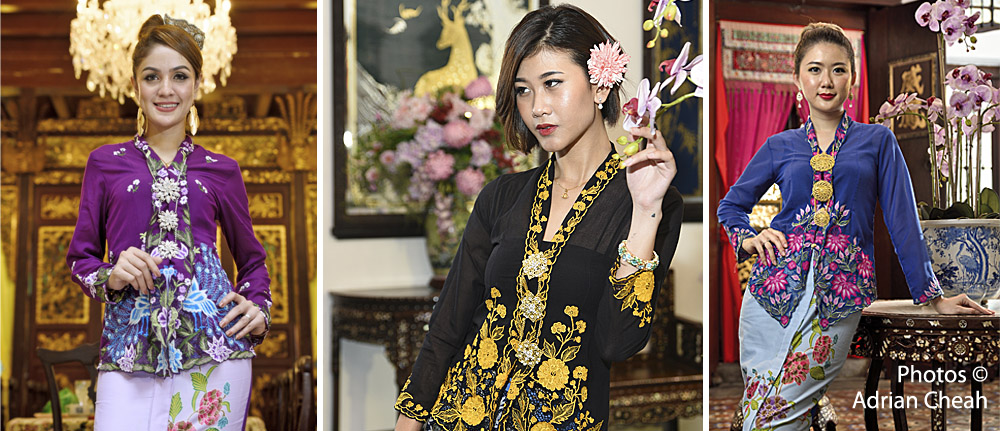
Beyond the food and language, one of the most captivating aspects of Nyonya culture is the baju kebaya. Each outfit is meticulously handmade with great skill, using only the finest materials, making the unique Nyonya kebayas a form of traditional haute couture. The intricate embroidery rivals the finest Venetian lacework and the true pièce de résistance is a delicate needlework technique known as "tebuk lubang" (literally "to punch holes"). This involves stitching the outlines of a floral motif on the fabric and carefully cutting away the inside. When done correctly, the result is a lace-like embroidery on the collar, lapels, cuffs, hem and the two triangular front panels that drape over the hips, known as the "lapik". The fabric of choice is usually kasar rubia (voile), although other materials such as muslin, silk and georgette can also be used. Given its semi-transparent nature, the kebaya is typically worn over a camisole for modesty.
According to Mum, a kebaya could be tailored for about RM150 back in the 1960s – a princely sum for those times. Materials could be sourced from Boon Wah on Campbell Street. Around 1.5 meters of cloth was usually sufficient to create a beautiful kebaya.

Kebayas have not become more affordable over the years. In fact, a well-made set of kebaya blouse and sarong can easily cost several thousand Ringgit. Despite the steep price, a high-quality kebaya is more than just a garment – it is an investment. With proper care, some may even appreciate in value over time.

Imagine my surprise when, by sheer stroke of luck in 2005, I discovered a tailor in KOMTAR who was willing to sew a kebaya for much less. Cecelia Lim, from County Fair Boutique, was not only friendly but also a master seamstress. I wasted no time in convincing my wife, Yvonne, to have both a kebaya blouse and sarong tailored. With a fine eye for colour and detail, she chose a light powder blue chiffon georgette fabric with colourful embroidered flowers. A matching blue sarong with a gold print was selected to complement the design. After taking her measurements, Cecelia told us to return in a week to collect the kebaya.

Upon returning to collect the beautiful blue kebaya, Yvonne could not resist ordering another. This time, she chose a pink-based floral design, pairing it with a vibrant red and gold sarong. On 6 July 2019, Yvonne wore the blue kebaya to a mock Peranakan wedding organised by the State Chinese (Penang) Association in conjunction with the Penang World Heritage Celebration. Our daughter stepped in to portray the radiant bride.

Since then, Cecelia and I have become good friends. She was a strong supporter of Little Penang Street Market, which ran for eleven years until 30 July 2017. Held every last Sunday of the month at Upper Penang Road, the market showcased local crafts and talent. Other talented kebaya makers, including Penang's famous Auntie Kim from Kim Fashion and Angeline from KKabaya Trading, were also present at Little Penang, contributing to the market’s vibrant display of local craftsmanship. The kebaya makers were always a crowd-puller.


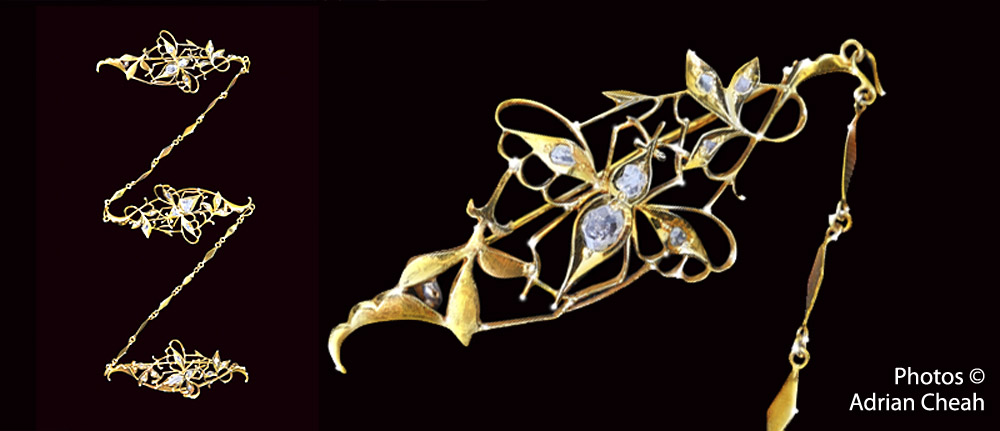
In 2018, when my niece was getting married in Australia, I ensured my dear sister Lillian, the mother of the bride, was dressed in nothing less than a splendorous outfit. Naturally, I introduced her to Cecelia, who tailored an elegant cream-coloured kebaya for her. The stunning kebaya was embroidered with auspicious cranes and peonies in full bloom, while the complementary black-based sarong featured peacocks perched amidst a floral garden. My sister completed this gossamer-like ensemble, a true work of art, with a dazzling set of 18-karat gold kerongsang adorned with intan (which I had purchased from Habib Jewels). She was the picture of elegance, admired by many at the wedding.

In 2024, at the Kebaya & Lagu Gala Dinner organised by the Penang Jawi Peranakan Heritage Society, Cecelia, the matriarch of needlework, received well-deserved recognition for her contributions to kebaya conservation. The Chief Minister of Penang presented her with a nomination letter, acknowledging her as the society’s nominee for the Seri Mas Living Cultural Heritage Award and the prestigious Tokoh Negara Orang Hidup Award, also known as the National Living Heritage Award.

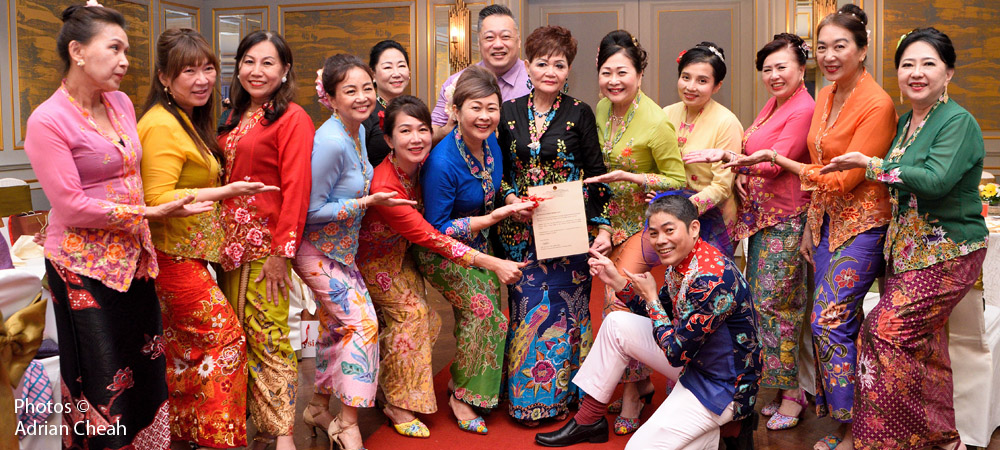
Having known Cecelia for over two decades, I could not be happier for her. One thing about Cecelia is that she does not seek awards or recognition; her focus has always been on customer satisfaction, a principle that has earned her a long list of loyal clients over the years.



With the creative Jojo Gouw and his fabulous kebaya creations.
Speaking of talented kebaya designers, I have had the privilege of meeting some remarkable creators over the years. One who truly captivated my attention is Jojo Gouw from Indonesia. In 2023, he showcased his wearable objet d'art masterpieces on the catwalk at the 34th Baba Nyonya International Convention gala dinner in Malacca. Jojo, soft-spoken, charming and remarkably humble, quickly earned my admiration.
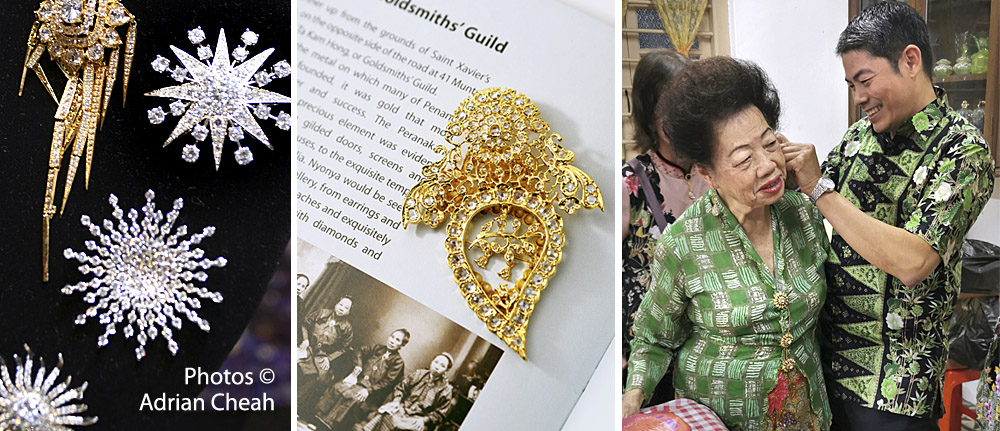
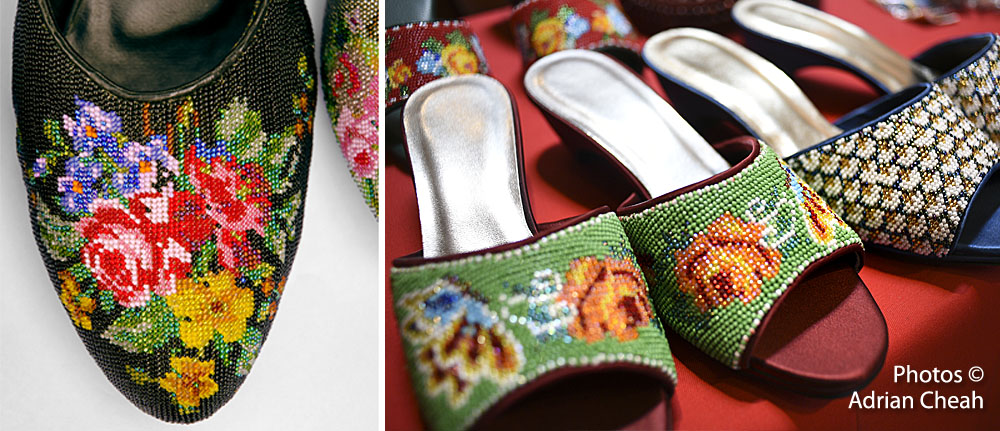
A Nyonya dame caught wearing a kebaya without the essential accessories is instantly doomed to a fashion faux pas. Accessorising is an art in itself and it includes the kerongsang – ornamental brooches often set with intan (diamond chips) embedded in suasa, a delicate alloy of gold and copper. The ensemble is completed with a silver belt, beaded slippers, a necklace, earrings, bracelets, bangles, rings, anklets and a few carefully placed hairpins in her meticulously styled hair. Every accessory is carefully chosen to complement the others, leaving nothing to chance.When the entire attire comes together flawlessly, it creates a harmonious look that embodies both cultural tradition and undeniable elegance.

However, not everyone is game when it comes to embracing the kebaya. Take Yvonne, for example. As much as I adore the artistry of the kebaya, she has never been particularly fond of wearing one. “Aiyoo, it makes me look like one of those rich aunties,” she would say with a playful grimace, her modern city-girl roots from Kuala Lumpur making her feel out of place in one. I have learned to let it slide, knowing that not everyone connects with tradition in the same way.
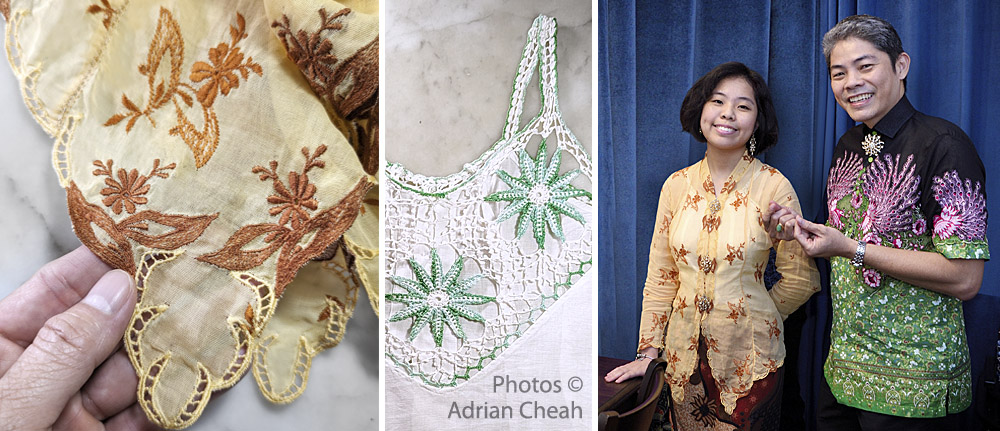
But when it comes to my daughter Jean, I have made it a mission to help her appreciate and embrace this unique part of her heritage. Jean has been blessed to inherit vintage kebayas from my Mum’s dear friends, Auntie Suan See and Geok Lan. One special piece, a camisole with delicate lace trimming made from tatting, was a gift from Geok Lan. Jean wears these timeless treasures with pride, cherishing not just their beauty, but also the heritage they represent. To her, these kebayas are more than garments – they are a living testament to her roots and she wears them with a deep sense of connection and reverence.
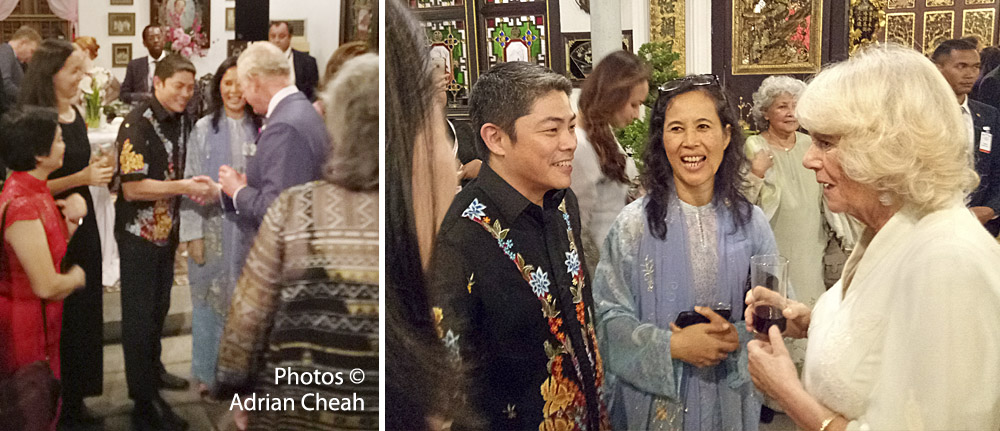
In 2015, I envisioned using the fabulous fabric of the kebaya to craft a shirt that was both stylish and masculine. I questioned, “Why should such an exquisite fabric, steeped in tradition, be confined to one gender?” This sparked a personal journey of exploration, and since then, I have designed several "kebaya" shirts that I wear with pride. One particularly memorable piece accompanied me when I had the honour of meeting the then Prince Charles, the Prince of Wales and Camilla, the Duchess of Cornwall, during their 2017 visit to Penang. The kebaya, with its intricate craftsmanship and rich heritage, is a timeless treasure that should also transcends gender. I believe its beauty and artistry should be embraced and celebrated by all.
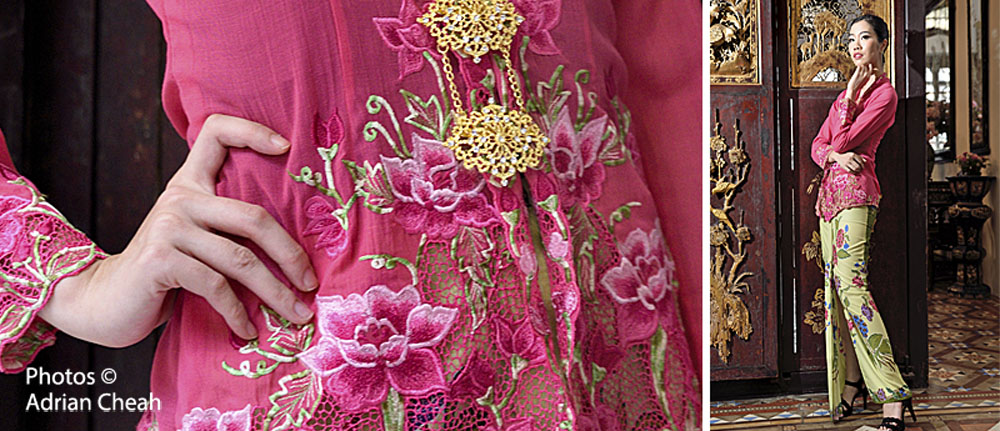
On 4 December 2024, the kebaya was inscribed into the UNESCO's Representative List of the Intangible Cultural Heritage of Humanity, a historic achievement jointly nominated by Brunei, Indonesia, Malaysia, Singapore and Thailand – the largest Southeast Asian nomination to date. This recognition, decided by the Intergovernmental Committee for the Safeguarding of Intangible Cultural Heritage, celebrates the kebaya's intricate craftsmanship and cultural significance. It also aims to raise awareness, encourage dialogue that respects diversity and honour the traditions and identities of communities worldwide. For me, this milestone affirms the enduring legacy of the kebaya – a piece of heritage that continues to inspire, unite and hopefully connect generations.
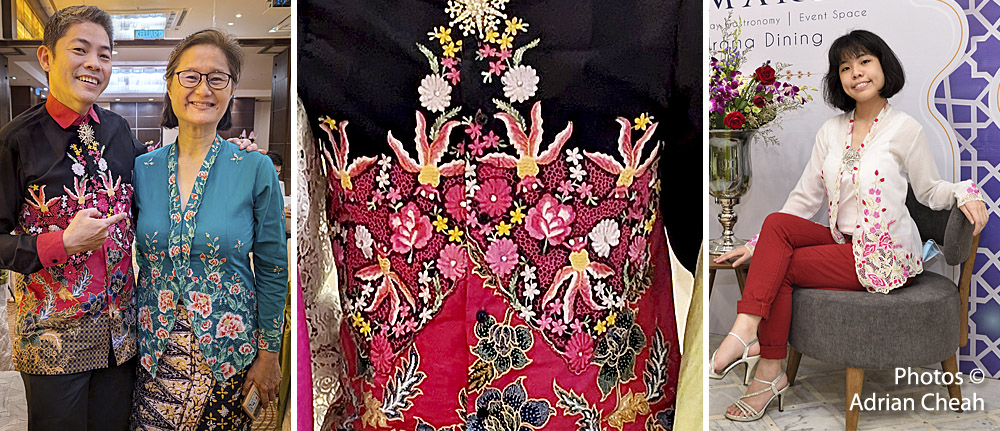
However, even with the UNESCO listing, will the kebaya remain a cherished attire of the older generation, reserved for grand occasions, or can the younger generation embrace it as a vibrant expression of their cultural heritage? Will it become a relic of the past, confined to museums and galleries for preservation, or can it evolve and find new relevance, sparking a resurgence for a brighter tomorrow? The answer lies with the community – it must decide, before the opportunity slips away, to breathe fresh life into this timeless tradition and ensure its legacy endures.
-------------------------------------
Written by and photographed by Adrian Cheah
© All rights reserved
Updated 5 December 2024